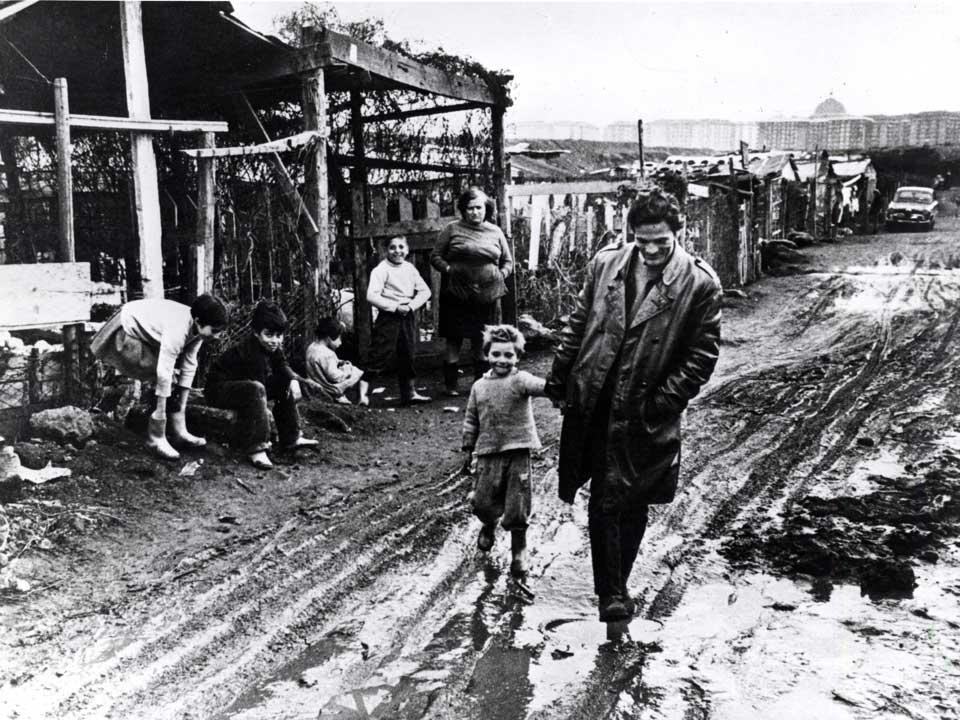
“What needs defending is the territory in its entirety, meaning a low wall, a loggia, a tabernacle or a farmstead. There are beautiful rustic buildings that should be defended like a church or a castle. But the people will have none of it. They have lost the sense of beauty and values. All is at the mercy of speculation,” said Pier Paolo Pasolini in 1974 in an interview with the newspaper Il Messaggero, a few months before being bludgeoned to death at the seaplane base of Ostia, outside Rome. Those were the years when there was still outrage and moral pain at the sight of the anthropogenically created landscape-monstrosity that was beginning to devour the country. People were aware that the decline of urban planning went hand in hand with civic and social decadence.
Forty years later, now that destruction has been wrought everywhere, Pasolini’s words have more pathos than prophecy, like only the words of a poet could be. They describe how the masses get used to seeing the “monstrous”, as he called the cultural darkening that was descending upon Italy and delivering it to the inchoate destruction of the landscape. Such destruction is unprecedented for the value of the unrepeatable identity of the Italian landscape, “a historicised picturesque entity arisen from the country’s very physiognomy,” said Cesare Brandi as early as the 1960s, denouncing the start of the environmental and civic catastrophe of a country that had gone from the sacrifices of World War II to the bulimia of the economic boom.
The civic and urbanistic regression of Ostia is the paradigm of the metamorphosis undergone by every periphery that has been transformed into a counter-city.
Now, more than being the place where a TV reporter of the satirical news programme Striscia la notizia was violently attacked by a local gang chief, Ostia is a city raped by building predation and ferocious commercial exploitation that have erased the view of the sea by erecting kilometres of fenced enclosures toward the beach. The local economy and politics have magnetised into sprawling corruption, commingling and connivance that has delivered thousands of citizens to the influence if not the whims of specific criminal powers organised in tribal clans. But the civic and urbanistic regression of Ostia is the part that tells everything. It is the paradigm of the metamorphosis undergone by every periphery that has been transformed into a counter-city, an extended non-place, an interior landscape, what Brantingham and Brantingham (1980s) call the fourth dimension of crime, the primary concern of environmental criminology.
It comes after the legal dimension, the offender dimension, and the victim dimension. The metropolitan peripheries (Ostia is an extension of Rome) have become the political laboratories of the fifth estate, of the deviant dimension organised for the control of the territory and endowed with its own “class consciousness” and cultural hegemony. The exploits seen in the television series Gomorra or Suburra or Romanzo Criminale have in recent years become the epoch-orchestrated musical score of delinquency, counterculture and territorial counterforce. This trend sees the suburbs as liberated from the city, as a land of predation, a theatre of arrogant exhibition. Compared to this new generation of deviation, the urban underclass of Pasolini’s periphery seems almost haloed with a romantic aura. In the working-class suburbs, in the historical peripheries that survived until the early 1980s, inequality was still processed through the utopias of change, new society, social and cultural redemption.
It is true that Pasolini was the prophet of their disenchantment, but until the mid-1970s, the suburbs were not yet a place of desperation. They became so in the mid-1980s and have continued along these lines until today. The old ties of solidarity that instigated Pasolini to retrace the tracks of premodern archaism were incinerated by the monstrosity described by this poet from the Friuli region of Italy. Free from the corset of residual legality that still constrains recognised society, pre-eminent individualism has exploded with expansive violence. It presents the bill for the destruction of the idea of the city, the increasingly radical separation between the centre and the outskirts. The city centre has become a non-place, either to entertain tourists or used for corporate display. This demonstrates that “what needs defending is the territory in its entirety.”


